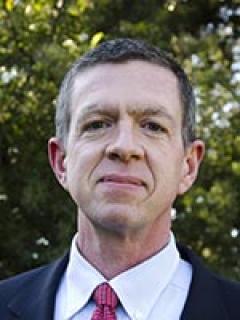Meet a Forester, Alex Friend
 This month, we are pleased to feature Alex Friend, Station Director with the USDA Forest Service Pacific Southwest Research Station. We invite you to meet Alex!
This month, we are pleased to feature Alex Friend, Station Director with the USDA Forest Service Pacific Southwest Research Station. We invite you to meet Alex! What was your first position in the field of forestry?
I was technically a paid employee for North Carolina State University and the University of Washington as a graduate student pursuing my education in forest resources. But my first position was as a post-doctoral fellow at Oak Ridge National Lab studying the physiology of air pollution impacts on loblolly pine.
How long have you been in your role?
I have been Station Director at the Pacific Southwest Research Station for six years.
What do you enjoy most about being a WFLC member?
Interacting with land managers and engaging on the forest resources issues facing the West. WFLC also provides the opportunity to explore how to best deliver science to our user community. I believe that there is an enormous potential to better connect land management with forest resources research.
What do you see to be the emerging issues in your region?
For my footprint the key issues are fire, water, and community. Fire in the western states, especially California, is enormously challenging. Of greatest concern is reaching common ground in the way we approach wildland fire. This starts with communities providing the social license for sustainable fire management practices, and extends to agencies that need to interact across boundaries. At the base of it all is our understanding of what constitutes good fire management and how to adjust actions based on changing social, political, and environmental conditions. The role of research is to help fire management organizations make good decisions based on an understanding of the comprehensive system. The challenge of course is that the rate of change in the system can outpace our ability to understand it.
Providing a reliable quantity and quality of water from our forested watersheds is one of the most valuable resources in California and the Pacific Islands. Understanding the sensitivity of water resources to forest management is one of the most critical areas of research if we are to maximize the availability of this precious resource.
Community is my best attempt at identifying, in one word, the social-environmental coupling we often call urban forestry. But “urban” does not capture the complexity of communities working to achieve a positive balance with trees and forests. This includes understanding the enormous benefits of street trees in urban settings on one extreme (too little canopy cover), to the potential hazards of forest around residential developments in the wildland urban interface at the other (too many trees/fuels).
What is your favorite outdoor activity?
Cross-country skiing. I fell in love with this early in life, shuffling up and down Forest Service roads in the Cascades, but living in the Upper Peninsula brought this to a new level with my discovery of skate skiing and the magical feeling of gliding effortlessly over groomed forest trails –well, it feels effortless when the slope is slightly downward!
What would you do (for a career) if you weren’t doing this?
University Professor, as I was from 1989 to 2001 at Mississippi State University.